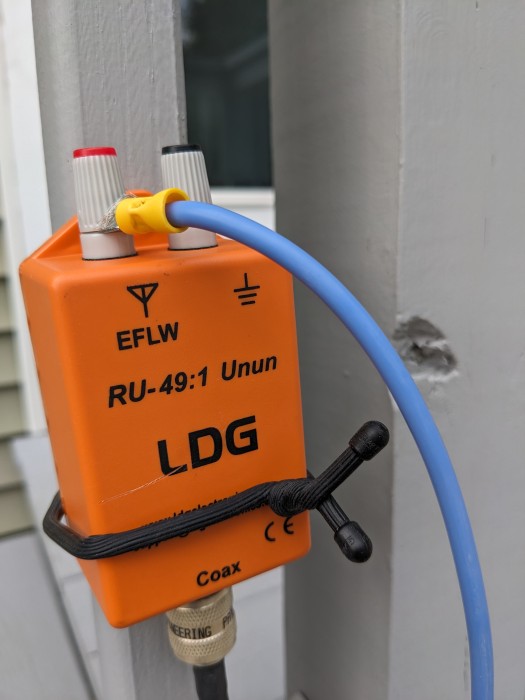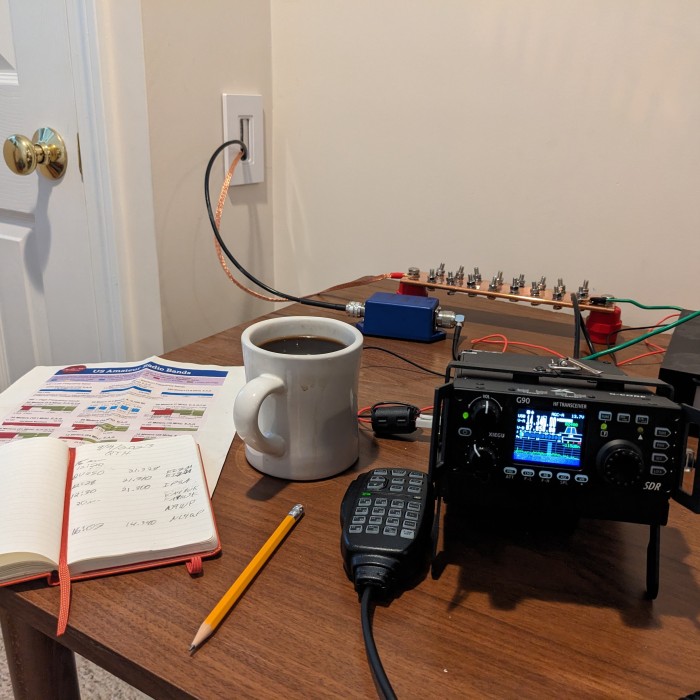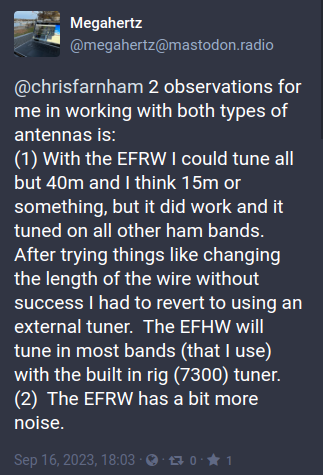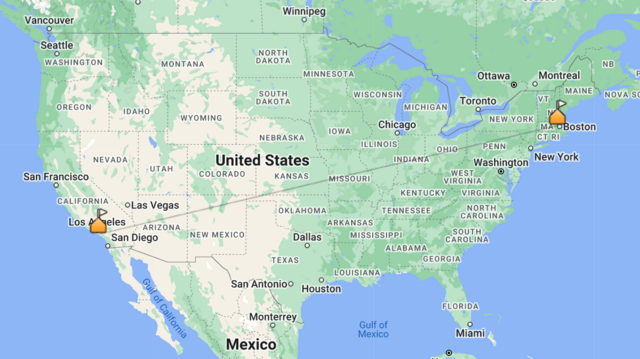New End-Fed Half-Wave Antenna
This past weekend (9/17/2023) I finally went ahead and constructed a new end-fed half-wave (EFHW) antenna. All my previous radio work was with the end-fed random wire (EFRW) antenna. I wanted to experiment and try out something resonant. I went with an end-fed because it’s easy to setup with the one tree on my 0.8 acre property.

End-fed antennas are pretty easy to construct. I built it exactly as instructed in this video, “HF Back-Yard Secret - A Budget Class Antenna System.” I used the same transformer that’s shown in the video, an LDG 49-1 Unun.

I cut the EFHW to 33 feet for the 20 meter band. If I doubled the length, then the antenna would work well for the 40 meter band. My yard might be able to fit a 66 foot antenna but not easily. After learning and working with this one I can easily get some more wire and build another one.

How well does my EFHW work?
In a Fediverse conversation megahertz@mastodon.radio said, “2 observations for me in working with both types of antennas is: (1) With the EFRW I could tune all but 40m and I think 15m or something, but it did work and it tuned on all other ham bands. After trying things like changing the length of the wire without success I had to revert to using an external tuner. The EFHW will tune in most bands (that I use) with the built in rig (7300) tuner. (2) The EFRW has a bit more noise.”

That has been my observation so far as well. I really liked how the random wire antenna allowed me to use any band. My Xeigu G90 has a great built-in antenna tuner. I had no issues on any band. But I was losing power because it was non-resonant.
Global radio propagation has been really poor lately due to solar storms. But last night I was hearing multiple California radio stations. I’d never had a contact that far west.
Going to California

With only 20 watts of power I was able to confirm a two-way contact with N6YYO in Huntington Beach, CA. This was on 20 the meter band where my antenna is resonant.
N6YYO had a really good directional antenna and was really patient as I repeated “Whiskey One Yankee Tango Quebec” (W1YTQ) several times in order to confirm it correctly. I heard his signal in Massachusetts loud and clear. He gave me an RST of 4-3 which is 4 (out of 5) for readability and a 3 (out of 9) for Signal-Strength. The new antenna and my 20 watt Xeigu G90 made the trip to CA but barely.
The standard signal reporting method for amateur radio is the RST (Readability-Signal Strength-Tone) system “Practical Signal Reports” is a great resource for learning more
This is all anecdotal and not very scientific - so far I’m pretty pleased with the antenna. My takeaway isn’t that the new EFHW antenna is better. This experience encourages me to continue and experiment with antennas and my station configuration to learn what works for different conditions, frequency bands and modes of communication.